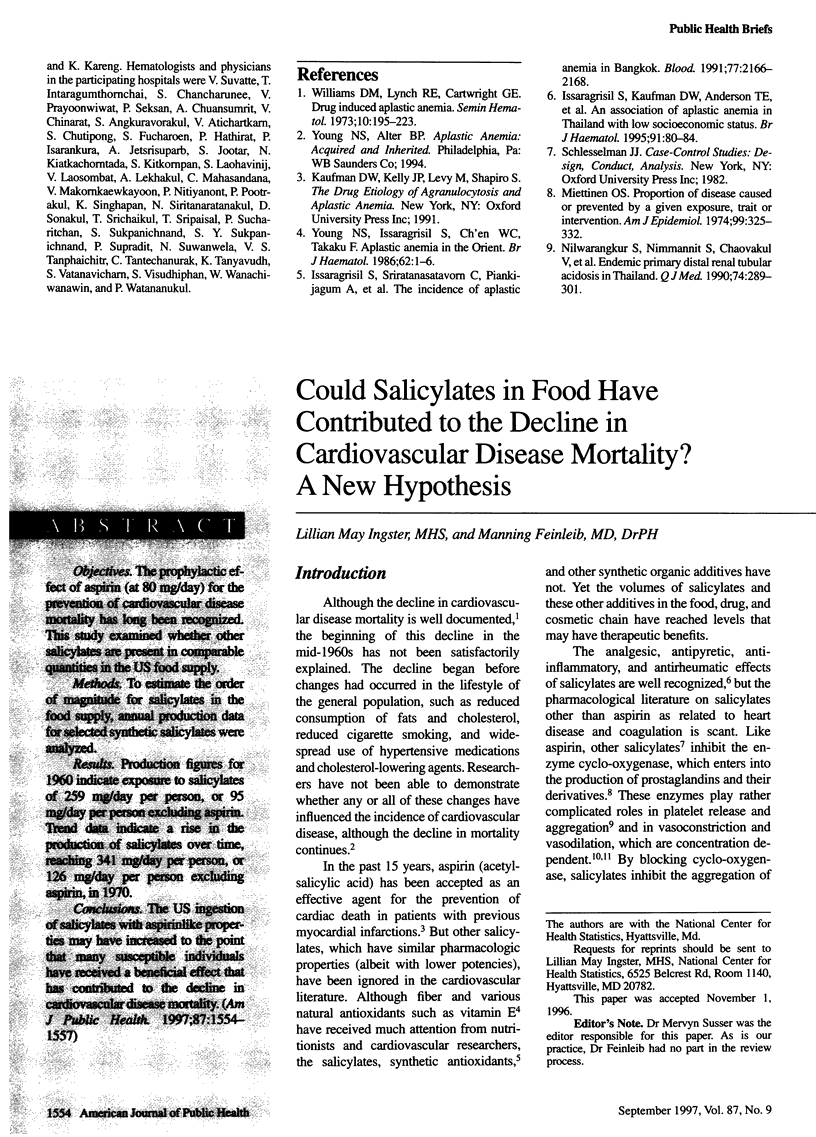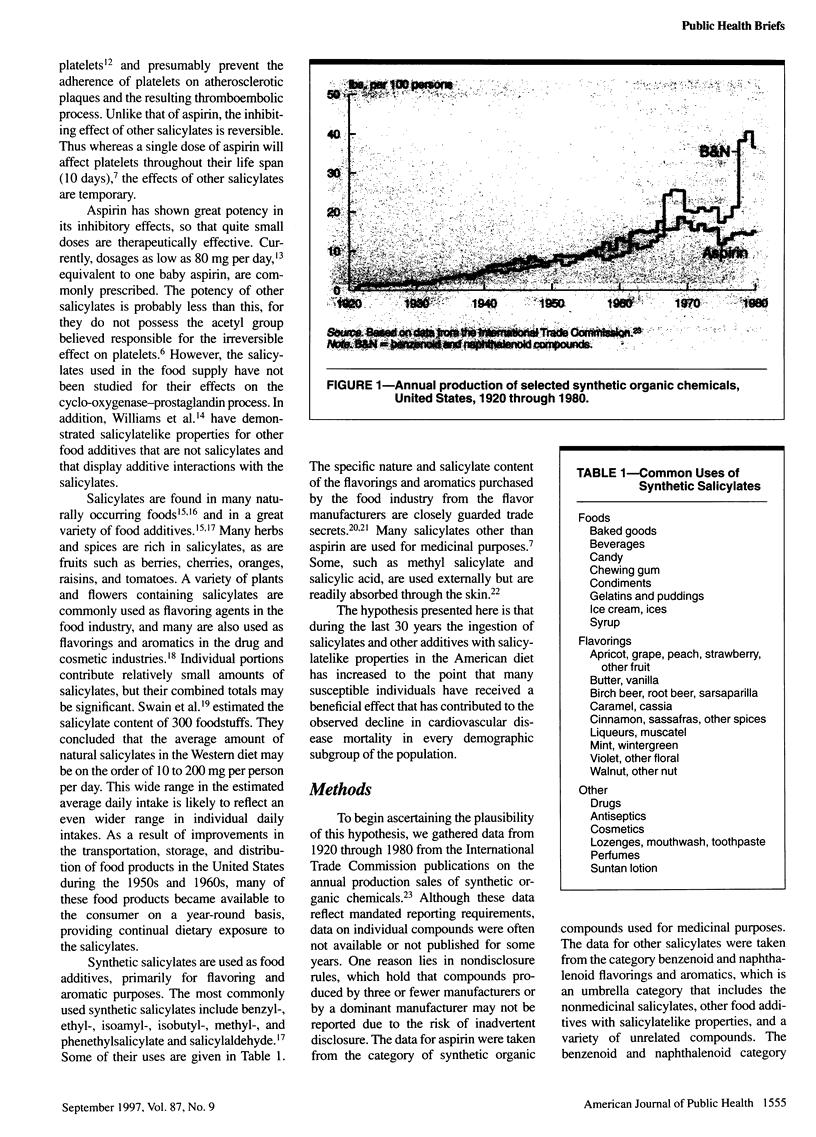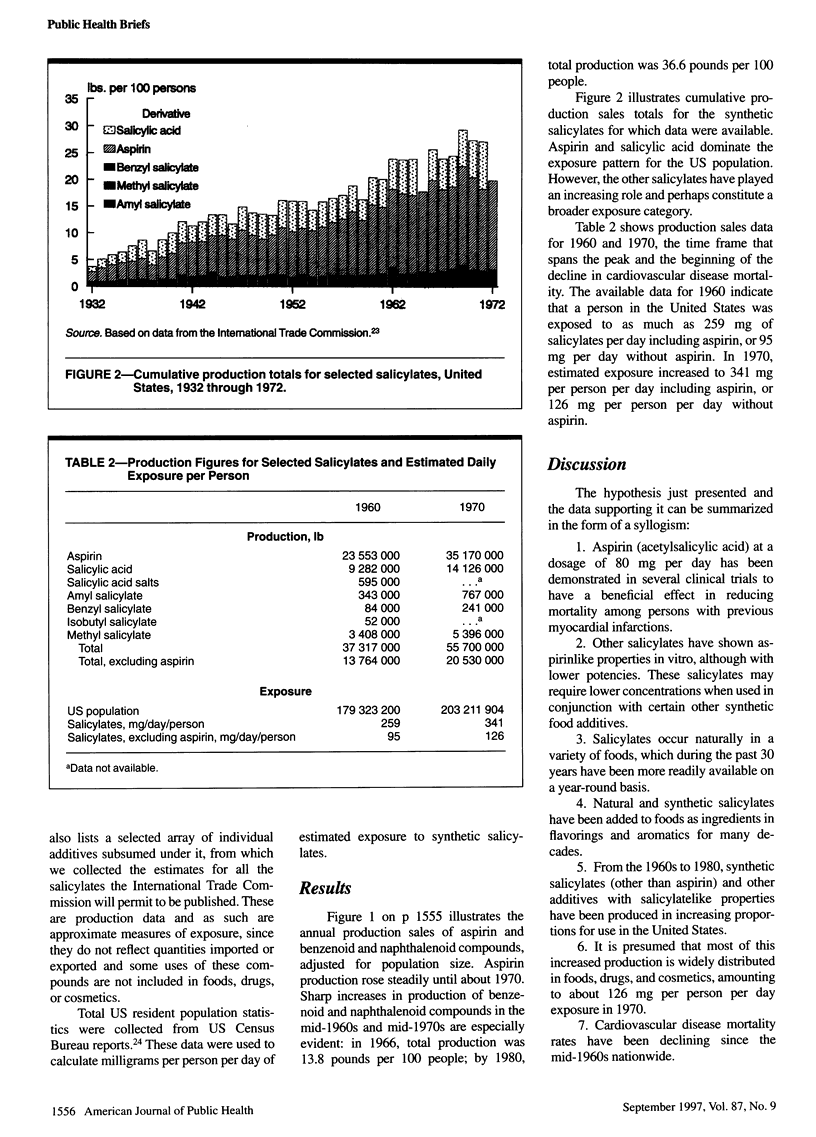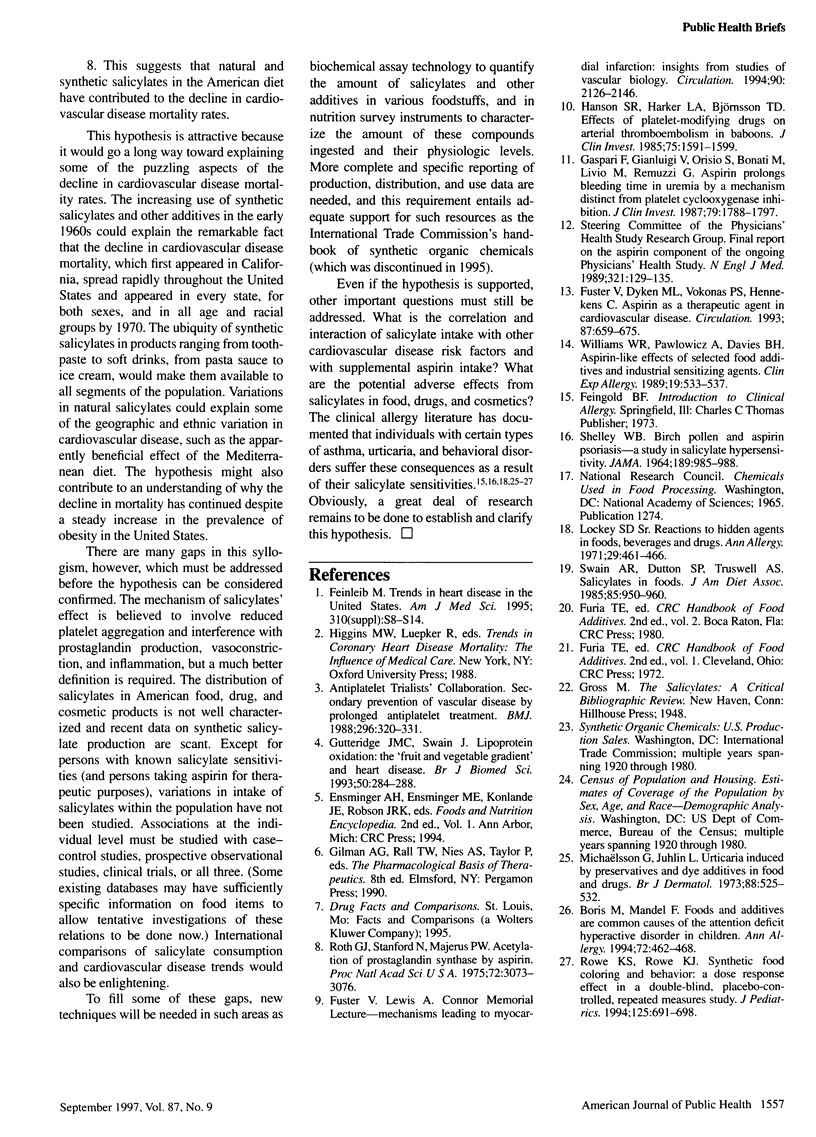Abstract
OBJECTIVES: The prophylactic effect of aspirin (at 80 mg/day) for the prevention of cardiovascular disease mortality has long been recognized. This study examined whether other salicylates are present in comparable quantities in the US food supply. METHODS: To estimate the order of magnitude for salicylates in the food supply, annual production data for selected synthetic salicylates were analyzed. RESULTS: Production figures for 1960 indicate exposure to salicylates of 250 mg/day per person, or 95 mg/day per person excluding aspirin. Trend data indicate a rise in the production of salicylates over time, reaching 341 mg/day per person, or 126 mg/day per person excluding aspirin, in 1970. CONCLUSIONS: The US ingestion of salicylates with aspirinlike properties may have increased to the point that many susceptible individuals have received a beneficial effect that has contributed to the decline in cardiovascular disease mortality.
Full text
PDF



Selected References
These references are in PubMed. This may not be the complete list of references from this article.
- Boris M., Mandel F. S. Foods and additives are common causes of the attention deficit hyperactive disorder in children. Ann Allergy. 1994 May;72(5):462–468. [PubMed] [Google Scholar]
- Feinleib M. Trends in heart disease in the United States. Am J Med Sci. 1995 Dec;310 (Suppl 1):S8–14. doi: 10.1097/00000441-199512000-00003. [DOI] [PubMed] [Google Scholar]
- Fuster V., Dyken M. L., Vokonas P. S., Hennekens C. Aspirin as a therapeutic agent in cardiovascular disease. Special Writing Group. Circulation. 1993 Feb;87(2):659–675. doi: 10.1161/01.cir.87.2.659. [DOI] [PubMed] [Google Scholar]
- Fuster V. Lewis A. Conner Memorial Lecture. Mechanisms leading to myocardial infarction: insights from studies of vascular biology. Circulation. 1994 Oct;90(4):2126–2146. doi: 10.1161/01.cir.90.4.2126. [DOI] [PubMed] [Google Scholar]
- Gaspari F., Viganò G., Orisio S., Bonati M., Livio M., Remuzzi G. Aspirin prolongs bleeding time in uremia by a mechanism distinct from platelet cyclooxygenase inhibition. J Clin Invest. 1987 Jun;79(6):1788–1797. doi: 10.1172/JCI113020. [DOI] [PMC free article] [PubMed] [Google Scholar]
- Gutteridge J. M., Swain J. Lipoprotein oxidation: the 'fruit and vegetable gradient' and heart disease. Br J Biomed Sci. 1993 Sep;50(3):284–288. [PubMed] [Google Scholar]
- Hanson S. R., Harker L. A., Bjornsson T. D. Effects of platelet-modifying drugs on arterial thromboembolism in baboons. Aspirin potentiates the antithrombotic actions of dipyridamole and sulfinpyrazone by mechanism(s) independent of platelet cyclooxygenase inhibition. J Clin Invest. 1985 May;75(5):1591–1599. doi: 10.1172/JCI111865. [DOI] [PMC free article] [PubMed] [Google Scholar]
- Lockey S. D., Sr Reactions to hidden agents in foods, beverages and drugs. Ann Allergy. 1971 Sep;29(9):461–466. [PubMed] [Google Scholar]
- Michaëlsson G., Juhlin L. Urticaria induced by preservatives and dye additives in food and drugs. Br J Dermatol. 1973 Jun;88(6):525–532. doi: 10.1111/j.1365-2133.1973.tb08014.x. [DOI] [PubMed] [Google Scholar]
- Roth G. J., Stanford N., Majerus P. W. Acetylation of prostaglandin synthase by aspirin. Proc Natl Acad Sci U S A. 1975 Aug;72(8):3073–3076. doi: 10.1073/pnas.72.8.3073. [DOI] [PMC free article] [PubMed] [Google Scholar]
- Rowe K. S., Rowe K. J. Synthetic food coloring and behavior: a dose response effect in a double-blind, placebo-controlled, repeated-measures study. J Pediatr. 1994 Nov;125(5 Pt 1):691–698. doi: 10.1016/s0022-3476(94)70059-1. [DOI] [PubMed] [Google Scholar]
- SHELLEY W. B. BIRCH POLLEN AND ASPIRIN PSORIASIS. A STUDY IN SALICYLATE HYPERSENSITIVITY. JAMA. 1964 Sep 28;189:985–988. doi: 10.1001/jama.1964.03070130005001. [DOI] [PubMed] [Google Scholar]
- Swain A. R., Dutton S. P., Truswell A. S. Salicylates in foods. J Am Diet Assoc. 1985 Aug;85(8):950–960. [PubMed] [Google Scholar]
- Williams W. R., Pawlowicz A., Davies B. H. Aspirin-like effects of selected food additives and industrial sensitizing agents. Clin Exp Allergy. 1989 Sep;19(5):533–537. doi: 10.1111/j.1365-2222.1989.tb02429.x. [DOI] [PubMed] [Google Scholar]


